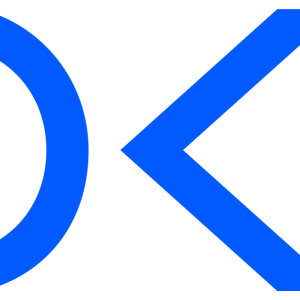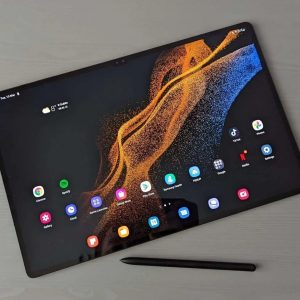Microsoft Corporation is one of the world’s largest technology companies, known for developing and selling computer software, electronics, and personal computers. Founded in 1975, Microsoft has played a significant role in shaping the technology industry and revolutionizing the way we use computers. However, have you ever wondered who founded Microsoft Corporation and how it all began? In this article, we will delve into the history of Microsoft and explore the story behind its founders. Let’s uncover the mystery behind the iconic company that has changed the world of technology forever.
About Microsoft Corporation
Microsoft Corporation is a multinational technology company founded in 1975. The company is headquartered in Redmond, Washington, USA, and is known for developing, licensing, and selling computer software, consumer electronics, and personal computers.
Microsoft’s flagship product is the Windows operating system, which is used by millions of people around the world. Additionally, the company produces other popular software applications such as Microsoft Office Suite, Edge web browser, and Microsoft Teams.
Over the years, Microsoft has expanded its business to include gaming consoles, such as the Xbox, and hardware devices like the Microsoft Surface line of laptops and tablets. The company has also made significant contributions to the field of artificial intelligence and cloud computing with its products, including Azure and Cortana.
With a strong presence in the technology industry, Microsoft ↗ has become one of the world’s largest companies. The company’s mission is to empower individuals and organizations to achieve more through their technology products and services.
Products
Software development
Computer hardware
Consumer electronics
Social networking service
Cloud computing
Video games
Internet
Corporate venture capital
Brands
Windows
Office
Skype
Visual Studio
Bethesda
Dynamics
Xbox
Minecraft
Surface
Services
Azure
Bing
LinkedIn
Yammer
Microsoft 365
OneDrive
Outlook.com
GitHub
Microsoft Store
Windows Update
Xbox Game Pass
Xbox network
Who founded Microsoft Corporation?

Microsoft Corporation was founded by Bill Gates ↗ and Paul Allen on April 4, 1975. The company initially focused on developing programming languages and software for personal computers. One of its early successes was the development of MS-DOS, the operating system for IBM-compatible personal computers.
History
Microsoft’s origins can be traced back to the mid-1970s when Bill Gates and Paul Allen, two friends from Seattle, began tinkering with computer software. They wrote a version of the BASIC programming language for the Altair 8800, an early personal computer, which became a hit with hobbyists and enthusiasts.
In 1980, IBM ↗ approached Microsoft to provide an operating system for its new personal computer, the IBM PC. Microsoft purchased an operating system from another company and adapted it for the IBM PC, renaming it MS-DOS (Microsoft Disk Operating System).
In the mid-1980s, Microsoft began developing Windows, a graphical user interface for MS-DOS. The first version of Windows was released in 1985 and was a significant success, paving the way for future versions of the operating system.
Founding and early growth
Bill Gates and Paul G. Allen, childhood friends from Seattle, made history in 1975 when they adapted BASIC, a popular programming language for mainframe computers, to run on the Altair, one of the earliest personal computers (PCs). This marked the birth of Microsoft, which was derived from the words “microcomputer” and “software”. Over the following years, Gates and Allen refined BASIC and developed additional programming languages.
In 1980, Microsoft was approached by International Business Machines Corporation (IBM) to create an operating system for its first PC, the IBM PC. Microsoft acquired an operating system from another company, modified it, and rebranded it as MS-DOS (Microsoft Disk Operating System). When IBM PC was launched in 1981, MS-DOS was released along with it. This marked the beginning of a new era, as most personal computer manufacturers licensed MS-DOS as their operating system, generating massive revenues for Microsoft. By the early 1990s, Microsoft had sold more than 100 million copies of MS-DOS, surpassing rival operating systems such as CP/M and IBM OS/2.
Windows, a graphical user interface, was introduced by Microsoft as an extension of their operating system in 1990. Its third version, released in the same year, gained widespread popularity. By 1993, Windows 3.0 and its subsequent versions were selling at a rate of one million copies per month, and nearly 90 percent of the world’s PCs were running on a Microsoft operating system. In 1995, Microsoft released Windows 95, which fully integrated MS-DOS with Windows and competed with Apple’s Mac OS in terms of ease of use.
In addition to operating systems, Microsoft became the leader in productivity software such as word-processing and spreadsheet programs, surpassing rivals Lotus and WordPerfect in the process. The company also expanded its electronic publishing division, which was created in 1985 and had already achieved success with its multimedia encyclopedia, Encarta. It entered the information services and entertainment industries with a range of products and services, notably the Microsoft Network and MSNBC, a joint venture with the National Broadcasting Company.
By the mid-1990s, Microsoft had become one of the most powerful and profitable companies in American history. The company consistently earned profits of 25 cents on every sales dollar, an impressive achievement. In 1996, it topped $2 billion in net income for the first time, and its unbroken string of profits continued, even during the Great Recession of 2007-2009. However, the company’s rapid growth in a fiercely competitive and fast-changing industry led to resentment and jealousy among rivals. Some competitors claimed that Microsoft’s practices violated U.S. laws against unfair competition. Microsoft and its defenders countered that their rise had encouraged competition and technical innovation and that their software had consistently become less expensive and more useful.
In 1994, a U.S. Justice Department investigation into Microsoft concluded with a settlement in which Microsoft agreed to change some sales practices that were deemed unfair to customers who wanted to try alternative programs. The following year, the Justice Department successfully challenged Microsoft’s proposed purchase of Intuit Inc., the leading maker of financial software for PCs at the time.
Entry into the gaming and mobile phone markets
Microsoft ventured into the video gaming market in 2001 with the release of its Xbox console ↗, which quickly became the second most popular gaming console after Sony’s PlayStation. In 2002, the company launched Xbox Live, a broadband gaming network for its consoles. In 2005, Microsoft released a more powerful gaming console, the Xbox 360.
However, the console faced intense competition from Nintendo’s Wii and Sony’s PlayStation, and Microsoft struggled to make consistent profits from it. In 2009, Microsoft cut the price of the Xbox 360 Elite by as much as 25 percent to increase market share, which was successful, making the Xbox 360 the most used game console in American homes by 2010. However, the price cuts also resulted in a 6 percent drop in revenue in Microsoft’s Entertainment and Devices Division (EDD). The Xbox 360 was replaced by the Xbox One in 2013, which was later replaced by the Xbox Series X and Xbox Series S in 2020.
Microsoft’s other products under EDD, such as the Zune family of portable media players introduced in 2006, failed to compete with the market-dominant Apple’s iPod, leading to its discontinuation in 2011. Microsoft’s Windows Mobile OS, which was used in smartphones made by different vendors, including LG, HTC, Motorola, and Samsung, struggled to gain market share in the United States against Research in Motion’s BlackBerry and Apple’s iPhone. In 2009, Microsoft stopped publishing online and disc versions of its Encarta encyclopedia.
Battling with Google
Despite Microsoft’s dominance in operating systems and quick recovery in the browser wars, it struggled to compete in the search-engine market. Google and Yahoo were the leading companies in this field, leaving Microsoft’s search engine, Live Search, trailing behind. In 2009, Microsoft released Bing, a “decision engine” designed to provide more retrieved information in search pages and enable better-informed decisions.
Microsoft attempted to buy Yahoo in 2008 for $44.6 billion, but the proposal was rejected. However, negotiations between the companies continued, and in 2009 they reached an agreement where Yahoo would use Bing for its website and handle premium advertisements for Microsoft’s website. The deal continued with some modifications in 2015. Additionally, Microsoft licensed search content from Wolfram Research.
In its competition with Google, Microsoft also entered the cloud computing market, launching its Windows Azure platform in 2010. It allowed service providers or businesses to build computing infrastructure in the cloud and offer it as services to users. Microsoft also released Office 365, a cloud version of its Office software suite, which included services similar to Google Docs.
In 2011, Microsoft acquired Skype for $8.5 billion, adding it to Xbox, Outlook, and Windows smartphones. This acquisition put Microsoft in competition with Apple’s FaceTime and Google’s Voice services. In 2016, Microsoft made an even larger acquisition with its $26.2 billion purchase of LinkedIn, a career-focused social networking company.
Corporate Social Responsibility
Microsoft has a strong commitment to corporate social responsibility, with a focus on sustainability, accessibility, and community engagement. The company has pledged to become carbon negative by 2030 and to remove all the carbon it has emitted since its founding by 2050. Microsoft also supports initiatives to promote diversity and inclusion in the tech industry.
Further reading:





